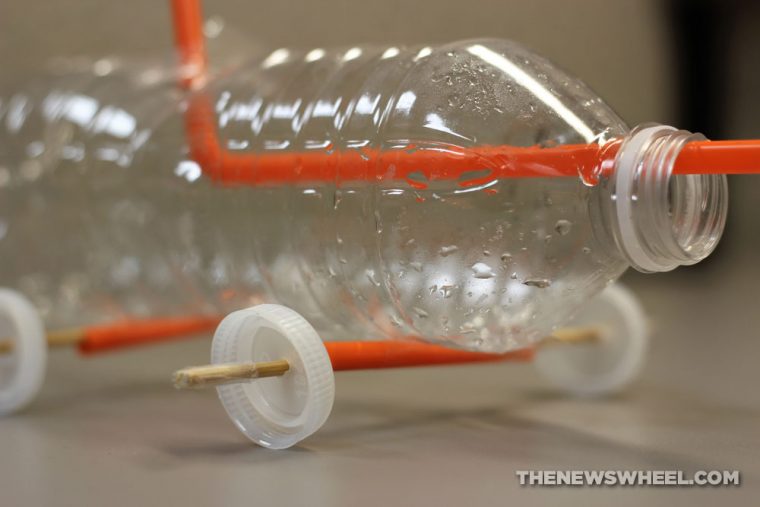Science Experiments That Teach Automotive Principles
Hands-on experiments are fun, effective ways to teach STEM principles — many of which apply to mechanical technology like automobiles.
Here are some low-cost experiments you can do with your children or students to simulate propulsion, gravity, friction, and other scientific principles related to cars.
People Say a Car Is the Best Graduation Gift… Why Is That True?
Car-related science experiments you can do on a budget
Rough roads: Test the relationship between friction and speed by constructing a downhill ramp to roll model cars down. Buy a variety pack of sandpaper with different levels of grit and use a stopwatch to time how long it takes the cars to roll across each of the different surfaces (tested one at a time). Full directions are on All Science Fair Projects.
Balloon car: This explores wind-based propulsion and Newton’s Third Law of Motion (for every action, there’s an equal opposite reaction). You can build your own balloon-powered car in a variety of ways, from LEGO® bricks to cardboard boxes to pre-built kits. Adhere the neck of a balloon to the car, with the opening facing backward, and blow the balloon up. When you release it, the car will roll forward. Full directions are on Steve Spangler Science.
Rubber band car: Similar to the balloon car but relating to stored, potential energy through elasticity, you need to build a basic four-wheeled model to simulate car. You’ll use a combination of cardboard, CDs, skewers, paper clips and rubber bands to craft it. When you twist the rubber band and let it go, it will spin the axle and push the car forward. Full directions are on Scientific American.
Downhill races and ramps: There are a lot of simple experiments you can do to explore the physics of gravity using ramp angles. Time how fast a car rolls down a ramp based on its angle of descent, or see how far it jumps off the end of a ramp. You can measure these and calculate the data or just play around so younger kids can observe the difference themselves.
There are plenty of other creative ways to simulate the relationship between physics principles and automobiles, so search on teaching websites for more inspiration.
Seasonal Celebrations: Ideas for decorating your car for Trunk or Treat

The News Wheel is a digital auto magazine providing readers with a fresh perspective on the latest car news. We’re located in the heart of America (Dayton, Ohio) and our goal is to deliver an entertaining and informative perspective on what’s trending in the automotive world. See more articles from The News Wheel.


